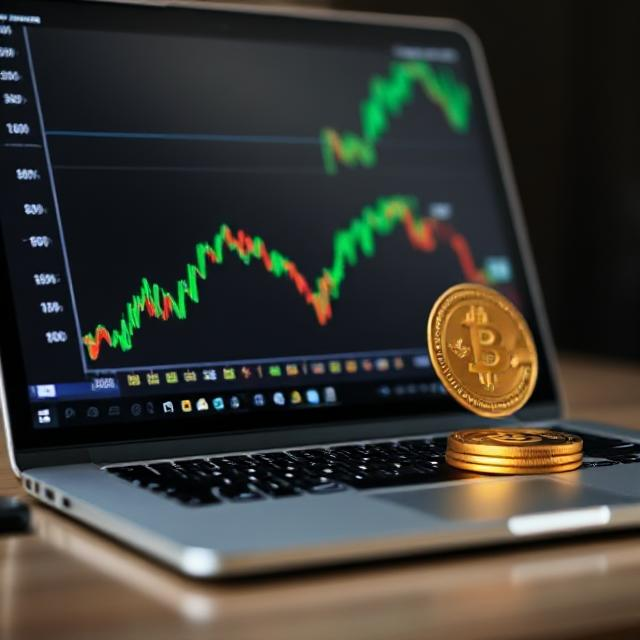Introduction
The total Crypto market Cap nearly grazed the $3 trillion mark during 2021. Shortly thereafter, it crashed by over 60% within months, expunging billions of dollars from the investors’ portfolios and leaving many of them in doubt about the Crypto market capitalization concept. Most likely, you have heard of that term floating around, irrespective of whether you are a newbie or a pro.
- But what does market capitalization mean?
- More importantly, does a high market cap necessarily make a crypto coin a good investment?
By broad definition, Crypto Market Cap refers to the product of a digital coin’s current price multiplied by the number of coins in circulation. It is a figure often employed to rank and compare different crypto, but placing sole reliance on the market cap can be misleading.
In this article, we will go through:
- ✅ What Crypto Market Cap really tells you (and what it doesn’t).
- ✅ Why Crypto Market Cap can be deceiving and manipulated.
- ✅ How to wisely leverage it to find great investment opportunities and avoid traps.
While by now you ought to understand very clearly how the market cap works, there should be no reason why you should provide for repeating common myths and hype for your investment decisions. Let’s get started. 🚀

What Is Crypto Market Cap?
When dealing with cryptocurrencies, the most important number you will most likely come across is market capitalization (Crypto Market Cap). But what does this mean?
Understanding Market cap
Crypto Market Cap refers to the total market value of a cryptocurrency. This is easily calculated using the following simple formula:
Market Cap = Current Price × Circulating Supply
For Example: If the price of the coin is $100 and if it did have 10 million coins circulating, its market cap would then be around $1 billion.
Crypto Market Cap shows investors the way to compare different crypto; the size compares with the overall market presence. However, a crypto with a high market cap doesn’t necessarily mean it will be a good investment; it should also be considered with additional factors, such as the use case, level of adoption, and trends within the market.
Types of Crypto Market Cap
Generally, cryptocurrencies are segmented into three groups depending on their market cap:
🔹 Large-Cap Crypto ($10B Market Cap) Examples: Bitcoin (BTC), Ethereum (ETH) Considered safer with lower risk though usually slower growth, these cryptos usually have a good adoption record along with a healthy track record.
🔹 Mid-Cap Crypto ($1B – $10B Market Cap) Examples: Solana (SOL), Avalanche (AVAX) High-risk, high-reward moves and mid-cap cryptos have potential in terms of price growth. Certainly have potential to reap reasonably good returns, although they carry much more volatility than large-caps.
🔹 Small-Cap Crypto (Below $1B Market Cap) Example: Meme coins and newer projects These are risky, speculative assets. Mapperes Generally considered more risky than their big brothers, small-cap coins have the chance, depending on myriad factors, to appreciate quickly or fall similarly. “They’ll either moonshot overnight or crash,” he claims.
While market cap provides excellent information regarding cryptos, investors ensure that factors such as liquidity, real-life use cases, and long-term viability are looked at prior to making an investment.🚀
How to Use Market Cap to Identify Winning Crypto
Crypto Market Cap is important, but savvy investors look deeper into matters before making the investment decision. Find the winning cryptocurrency based on other things besides market cap-analysts directly towards trading volume, real-world use cases, adoption, and fully diluted valuation.
1. Beyond the market cap-what it is truly worth.
Just because a cryptocurrency does have a high market cap does not mean it is a good investment. Consider the following:?
- Trading volume: This tells you the liquidity of an asset. The existence of high volume means that it can easily be bought or sold. When volume is low, it could show weak demand or possible price manipulation.
- Real-world use cases: Is the crypto solving an actual problem? Bitcoin is a store of value, Ethereum gives rise to smart contracts, and meme coins are almost always based on hype.
- Adoption and developer activity: Check partnerships, integrations, and activity on a developer level. There can never be too much of a network effect when it comes to overall success in the longer run.
2. Comparing Market Cap with Fully Diluted Valuation (FDV)
- Market Cap = (Current Price) × (Circulating Supply)
- FDV (Fully Diluted Valuation) = (Current Price) × (Total Supply)
FDV is very important, as some projects give out tokens gradually over a long time, whereby at present, the circulating supply might just be small, while the total supply may flood the market later on, causing dilution of the price.
For example,
- With a market cap of $1 billion but an FDV of $10 billion, more tokens will go into circulation, pushing the price lower.
- Bitcoin, on the other hand, has a finite supply (21 million BTC), which is less susceptible to inflation.
3. Case Study: Bitcoin vs. Solana vs. a New Altcoin
- Bitcoin (BTC): large-cap, high liquidity, strong faith in adoption. Belongs to long-term parkers with limited supply for valuable growth?
- Solana (SOL): mid-cap, increasing acceptance, large speed, but centralization concerns. Has been widely recognized by many developers growing into DeFi and NFTs. This channel spotting is often tagged less when compared against Bitcoin but very preferable by more experienced traders.
- New Altcoin (XYZ Coin): small-cap, high-risk, unknown future. Could be the next big thing or a pump-and-dump trap. Checking FDV, liquidity, and real–world adoption is key.
Crypto Market Cap vs. Stock Market Cap: Key Differences

Crypto Market Cap is a common metric in both crypto and stocks, but they work in very different ways. Stock market cap reflects the value of the company in the real world, while crypto market cap is exceptionally volatile and changes overnight.
1. Cryptocurrencies are more volatile.
The crypto market moves very fast. A single tweet, a government regulation, or a whale transaction can lead billions to be gained or lost in hours.
Once, for example, Bitcoin’s market cap dropped over $200 billion in a single day due to market fear. Meme coins like Dogecoin and Shiba Inu have skyrocketed on hype-induced fanfare only to crash when interest fades.
2. The stock market cap is more stable
In the stock market, a company’s market cap is linked to its fundamentals, which include revenues, profits, assets, and business performance. Despite how volatile and erratic a stock is, it won’t have the same extreme swings as crypto
For instance, Amazon has a trillion-dollar market cap supported by e-commerce dominance, cloud computing (AWS), and real earnings. Amazon’s market cap doesn’t just evaporate like it can for crypto during economic recessions.
3. Bitcoin vs. Amazon.
Market cap bases itself on price and circulating supply but can fall in seconds due to speculation. Crypto Market cap reflects the business, which is real, so they will not abruptly drop.
Top 5 Cryptos by Market Cap & Their Future Predictions
The crypto market is constantly evolving, but some cryptocurrencies have established themselves as dominant players. Here’s a look at the top 5 Crypto Market Cap, their strengths, and what the future holds.
1. Bitcoin (BTC): The King of Crypto 👑
✅ Market Cap Rank: #1
✅ Why It’s Important: The first and most trusted cryptocurrency, known as digital gold.
✅ Future Outlook: Bitcoin’s limited supply (21 million BTC) keeps demand high. With institutional adoption increasing, BTC is expected to remain the most dominant crypto. However, scalability and energy consumption concerns persist.
2. Ethereum (ETH) – Smart Contract Leader 🚀
✅ Market Cap Rank: #2
✅ Why It’s Important: Ethereum powers DeFi, NFTs, and smart contracts, making it the backbone of the blockchain ecosystem.
✅ Future Outlook: Ethereum’s shift to Ethereum 2.0 (proof-of-stake) has improved scalability and reduced energy consumption. Many believe Ethereum could one day “flip” Bitcoin in market cap due to its widespread utility and developer support.
3. Binance Coin (BNB) – Exchange Powerhouse 💰
✅ Market Cap Rank: #3
✅ Why It’s Important: BNB is the native token of Binance, the world’s largest crypto exchange. It’s used for trading discounts, transaction fees, and DeFi applications.
✅ Future Outlook: Binance faces regulatory challenges, but BNB’s strong ecosystem and use cases could help it maintain a high ranking.
4. Solana (SOL): The Speed Demon ⚡
✅ Market Cap Rank: #4
✅ Why It’s Important: Solana boasts high transaction speed and low fees, making it a strong competitor to Ethereum for DeFi and NFT projects.
✅ Future Outlook: Solana has faced network outages and centralization concerns, but if it improves reliability, it could remain a key player in blockchain technology.
5. XRP: Legal Battles & Potential Resurgence ⚖️
✅ Market Cap Rank: #5
✅ Why It’s Important: XRP is designed for fast cross-border payments and is backed by Ripple Labs.
✅ Future Outlook: XRP’s SEC lawsuit has caused price volatility. If Ripple wins, XRP could see a major comeback as banks and financial institutions adopt it for global payments.
Market Cap Mistakes That Could Cost You Thousands 💸
Three major mistakes you shouldn’t commit include: Market cap is perhaps one of the easiest ways to analyze crypto, but wrong interpretations may lead you to make costly errors in your crypto investment.
1. Ignoring Supply and Circulation
Not all cryptos are created equal. While some have huge supplies that could trick investors into believing the opposite.
- SHIB has a supply of more than 589 billion tokens; thus, even if it does reach a high market cap, its value per token is very low.
- Lesson: A huge market cap does not mean that an investment is a good one. In every case, check that the crypto you are considering has a supply that is circulating rather than total.
2. Not Considering Liquidity
Liquidity is extremely important since it reflects the ability to buy or sell a crypto without impacting its price.
- Example: If a crypto token is popular with a high market cap, do not expect to trade it every day with a smooth transaction.
- Lesson: Ensure that the crypto you invest in is listed on exchanges and that there is sufficient volume traded in 24 hours, thus ensuring liquidity.
3. Falling for Hype
Simply put, just because the Crypto Market Cap is growing does not mean that this is a project that is long-lasting. Most projects have their social media hype to pump, which leads to crash in the next phases.
- Example: It shot up from nowhere due to famous endorsements and, yet, the high volatility of Dogecoin is still alive.
- Lesson: Do not make investments based solely on the hype of Crypto Market Cap ; instead, look at real-world use cases, ongoing development activities, and adoption.
Expert Strategies for Using Crypto Market Cap in Your Portfolio 📊
The market capitalization of a cryptocurrency is an important indicator to use in crypto investment. How do the experts manage market cap to build a successful portfolio?
Diversification: Large, Mid and Small-Cap Balancing 🔄
A diversified portfolio includes many different cryptocurrencies.
- Large Cap (BTC, ETH): More stable yet slower growth.
- Mid Cap (SOL, MATIC): Higher risk with more power.
- Small Cap (New Altcoins): High-reward opportunities, albeit extremely volatile.
- Balancing Strategy: Spread your investment among different capitalizations to maximize the potential returns with the least risk of loss.
2. Risk Management: Stay away from inflated Market Cap 🚨
Not all the high-market-cap coins make for a good investment. There are some overhyped ones and some manipulated through fake pumps.
- Check trading volume: If a project has low volume but has a huge market cap, this is a red flag.
- Keep an eye on real adoption: if a project has no use cases but has a large market cap, keep your guards up.
3. Long-Term Vs. Short-Term Investing: Adjust Your Strategies According to Cap Size ⏳
- Large caps are long-term holdings as they are more stable.
- Mid/small-caps are quite volatile; hence, they are actively traded.
- Short-term profits may well be higher with mid/small caps, but must be reviewed on a more frequent basis.Strategy: Hold large caps for years, and trade mid/small caps according to trends.
Conclusion
Crypto Market Cap is an excellent way to analyze your investments in crypto, but only one of the various factors in your decision-making process. Some investors tend to think that a high market cap equals a safe investment, but that’s often not the case.
So here’s some great advice to remember:
- ✅ Crypto Market cap is great for comparing crypto, but doesn’t reflect liquidity, real-world adoption, or long-term value.
- ✅ Small-cap crypto that have the potential to grow overnight may carry a high risk, and large caps offer extensive stability. Always inspect trading volume, real-world use cases, and project developments closely as market caps can be inflated due to hype.
Final Thought:
Smarter investors are ones who dive into fundamentals, team credentials, partnerships, and use cases, rather than solely depending on Crypto Market Cap.💡
If you want to invest wiser, you should do some of the following:
- Research cryptocurrencies beyond market cap (look at trading volume, technology, and adoption saturation).
- Diversify your portfolio to balance risk and return.
- Keep abreast of crypto news and trends to make informed decisions.
A smart investor doesn’t just follow big numbers—they dig deeper to find real value. 🚀 So, let’s get started! Research now so that you can invest wisely!


